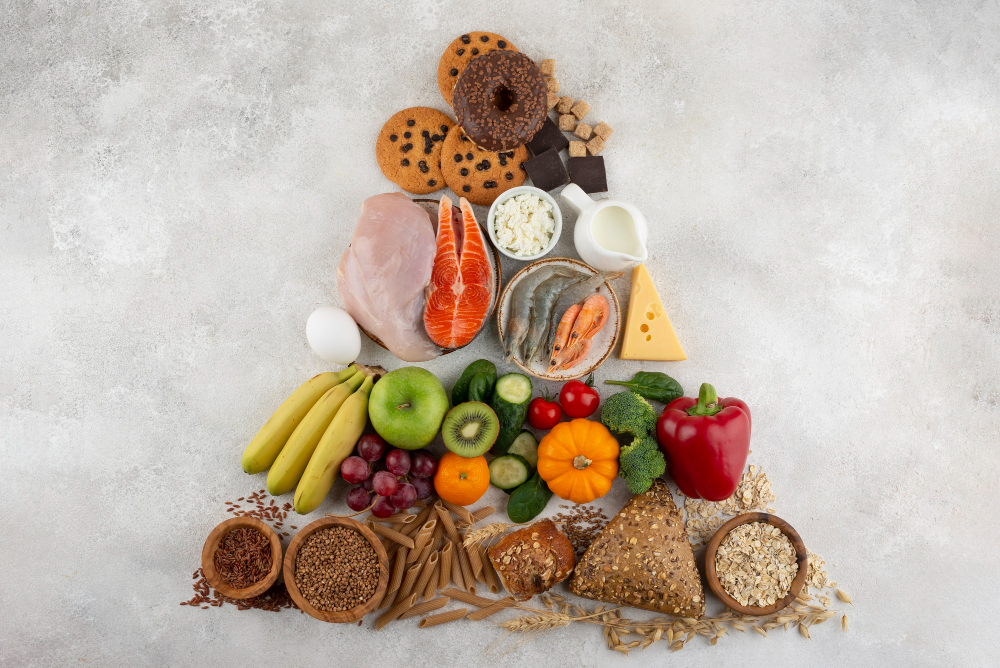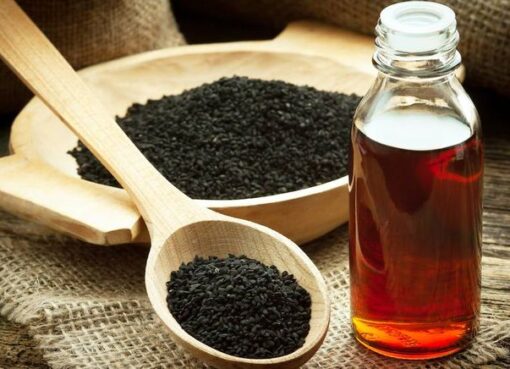Fiber often takes a back seat in our daily nutritional discussions, yet its importance for our overall health cannot be overstated. It’s the unsung hero of our digestive system, offering a myriad of benefits that extend far beyond just keeping us regular. Let’s delve deeper into the world of fiber, exploring its types, its incredible advantages, and 22 delectable high-fiber foods that deserve a prominent place on your plate.
Understanding Fiber:
Fiber is nature’s gift found abundantly in plant-based foods. It comes in two primary forms: soluble and insoluble. Soluble fiber dissolves in water, forming a gel-like substance that aids in slowing down digestion. On the other hand, insoluble fiber adds bulk to our stool, facilitating its smooth passage through the digestive tract. Both types play crucial roles in maintaining our health and well-being.
Benefits of Fiber:
- Reducing Cholesterol: Soluble fiber acts like a sponge, soaking up cholesterol in the digestive system and ushering it out of the body, leading to lower LDL (bad) cholesterol levels.
- Promoting a Healthy Weight: High-fiber foods take longer to digest, keeping us feeling fuller for longer periods. This satiety factor helps curb overeating and contributes to weight management efforts.
- Preventing Constipation: Insoluble fiber adds bulk to stool, making it easier to pass through the intestines, thus preventing constipation and promoting regular bowel movements.
- Managing Blood Sugar: Fiber slows down the absorption of sugar in the bloodstream, preventing sudden spikes in blood glucose levels. This is particularly beneficial for individuals with diabetes or those at risk of developing it.
- Reducing Cancer Risk: A fiber-rich diet, abundant in fruits, vegetables, and whole grains, has been linked to a reduced risk of certain types of cancer, including colorectal cancer.
22 High-Fiber Foods to Eat:
- Legumes (6-8 grams per serving):
Beans, lentils, and chickpeas are affordable, versatile, and rich in fiber. Legumes are a delicious way to boost your fiber intake, whether you’re enjoying a hearty bean chili, a comforting lentil soup, or a flavorful chickpea curry. - Berries (4-8 grams per cup):
Raspberries, blackberries, strawberries, and blueberries are not just sweet treats but also fiber powerhouses. These colorful gems are not only rich in fiber but also packed with antioxidants, vitamins, and minerals, making them essential additions to your diet. - Whole Grains (3-6 grams per cooked cup):
Quinoa, barley, oats, and brown rice are wholesome grains that offer a significant fiber boost to your meals. From hearty quinoa salads to comforting oatmeal breakfast bowls, whole grains are versatile ingredients that can elevate any dish. - Nuts and Seeds:
Almonds, chia seeds, flaxseeds, and pumpkin seeds are not just crunchy snacks but also excellent sources of fiber, healthy fats, and protein. Sprinkle them on your yogurt, add them to your smoothies, or enjoy them as a satisfying snack on their own. - Vegetables (3-5 grams per cooked cup):
Artichokes, broccoli, Brussels sprouts, and spinach are among the fiber-rich veggies that should feature prominently in your diet. Whether roasted, steamed, or sautéed, these nutrient-packed vegetables add flavor, texture, and fiber to your meals. - Fruits (3-6 grams per serving):
Avocado, pear, apple, and banana are convenient and delicious sources of fiber that can be enjoyed in various ways. Whether sliced on toast, blended into smoothies, or eaten as a quick snack, fruits are nature’s candy that packs a nutritious punch. - Sweet Potatoes (4 grams per medium-sized potato):
These vibrant tubers are not only delicious but also packed with fiber, vitamins, and minerals. Whether baked, mashed, or roasted, sweet potatoes add a sweet and savory touch to your meals while boosting your fiber intake. - Popcorn (4 grams per 3-cup serving):
When air-popped, popcorn becomes a guilt-free snack that satisfies your crunch cravings while providing a fiber boost. Enjoy it plain or seasoned with your favorite herbs and spices for a flavorful and satisfying treat. - Whole Wheat Pasta (6 grams per cooked cup):
Opt for whole wheat pasta to increase your fiber intake and enhance the nutritional value of your pasta dishes. Pair it with homemade tomato sauce, roasted vegetables, or lean protein for a delicious and nutritious meal. - Brussels Sprouts (4 grams per cooked cup):
These mini-cabbages are not only cute but also loaded with fiber, vitamins, and minerals. Whether roasted, sautéed, or shaved into salads, Brussels sprouts add a crunchy texture and nutty flavor to your meals. - Chia Seeds (10 grams per ounce):
Sprinkle chia seeds on your yogurt, smoothies, or salads to effortlessly elevate your fiber intake. These tiny seeds absorb liquid and form a gel-like consistency, making them a versatile ingredient for both sweet and savory dishes. - Acorn Squash (9 grams per cooked cup):
This winter squash adds a sweet, nutty flavor to your dishes while providing a substantial amount of fiber, vitamins, and minerals. Whether roasted, stuffed, or pureed into soups, acorn squash adds warmth and flavor to your meals. - Pearled Barley (6 grams per cooked cup):
Incorporate barley into soups, stews, or salads for a hearty, fiber-rich addition. This versatile grain adds texture and flavor to your dishes while providing a significant dose of fiber and nutrients. - Black Beans (15 grams per cooked cup):
These versatile legumes are not only rich in fiber but also protein, making them a staple in many cuisines. Whether added to burritos, salads, or soups, black beans are a flavorful and nutritious addition to any meal. - Lentils (15 grams per cooked cup):
Whether red, green, or brown, lentils are a nutritional powerhouse packed with fiber, protein, and essential nutrients. From comforting lentil soups to flavorful curries, lentils are a versatile ingredient that can be enjoyed in a variety of dishes. - Almonds (4 grams per ounce):
Snack on almonds for a satisfying crunch and a dose of fiber, healthy fats, and protein. Whether enjoyed on their own or added to trail mix, salads, or baked goods, almonds are a nutritious and convenient snack option. - Flaxseeds (8 grams per 2 tablespoons):
Ground flaxseeds can be easily added to smoothies, baked goods, or oatmeal to boost your fiber intake. These tiny seeds are also rich in omega-3 fatty acids and antioxidants, making them a superfood for heart health. - Raspberries (8 grams per cup):
Add a burst of sweetness and fiber to your breakfast or snacks with these vibrant berries. Whether eaten fresh, frozen, or blended into smoothies, raspberries are a delicious and nutritious addition to your diet. - Oats (4 grams per cooked cup):
Start your day on the right foot with a bowl of oatmeal, a comforting and fiber-rich breakfast option. Whether topped with fruits, nuts, or seeds, oats are a versatile grain that provides sustained energy and keeps you feeling full until lunchtime. - Broccoli (5 grams per cooked cup):
This cruciferous vegetable not only provides fiber but also a host of vitamins, minerals, and antioxidants. Whether steamed, roasted, or stir-fried, broccoli adds a crunchy texture and vibrant color to your meals. - Pears (6 grams per medium-sized pear):
Juicy, sweet, and packed with fiber, pears make for a satisfying and nutritious snack. Whether eaten fresh, sliced into salads, or poached for a decadent dessert, pears are a versatile fruit that adds sweetness and flavor to your meals. - Artichokes (7 grams per cooked cup):
Explore the unique flavor and texture of artichokes while reaping the benefits of their impressive fiber content. Whether steamed, grilled, or stuffed, artichokes add a delicious and nutritious touch to your meals.
Wrap up:
In summary, fiber is a key nutrient with numerous health benefits, including supporting weight loss, regulating blood sugar levels, and preventing constipation. Despite the recommended daily intake being 25 grams for women and 38 grams for men, many Americans fall short of meeting these targets.
Incorporating some of the fiber-rich foods mentioned above into your diet can help bridge this gap and boost your fiber intake. From legumes and whole grains to fruits and vegetables, there are plenty of delicious and nutritious options to choose from. By making simple yet impactful changes to your eating habits, you can reap the rewards of a fiber-rich diet and support your overall health and well-being.
Frequently Asked Questions :
What foods are highest in fiber?
Foods highest in fiber include legumes, whole grains, nuts and seeds, vegetables, and fruits like raspberries, blackberries, strawberries, and pears.
How to eat 25 grams of fiber a day?
To eat 25 grams of fiber a day, include fiber-rich foods in every meal and snack, such as oatmeal with berries and almonds for breakfast, salads with vegetables and chickpeas for lunch, and fruits and nuts for snacks.
Which fruit has the most fiber?
Raspberries are among the fruits highest in fiber, with around 8 grams per cup. Other high-fiber fruits include blackberries, strawberries, pears, and apples.
How to eat 30 grams of fiber a day?
To consume 30 grams of fiber a day, focus on including a variety of fiber-rich foods like vegetables, fruits, nuts, seeds, and whole grains in your meals and snacks throughout the day.
- How Does Automated Scheduling Save Time and Boost Engagement? - April 16, 2025
- 21 Delicious High Protein Foods - May 31, 2024
- Black Seed Oil: Health and Beauty Benefits - May 30, 2024




